
Kellie | Hazardous Fuels Reduction
📍 Eastern Nevada
🌲 forester
🦌 conservationist
🔥 improving wildlife habitat
Personal account. All views are my own.
Recent Posts
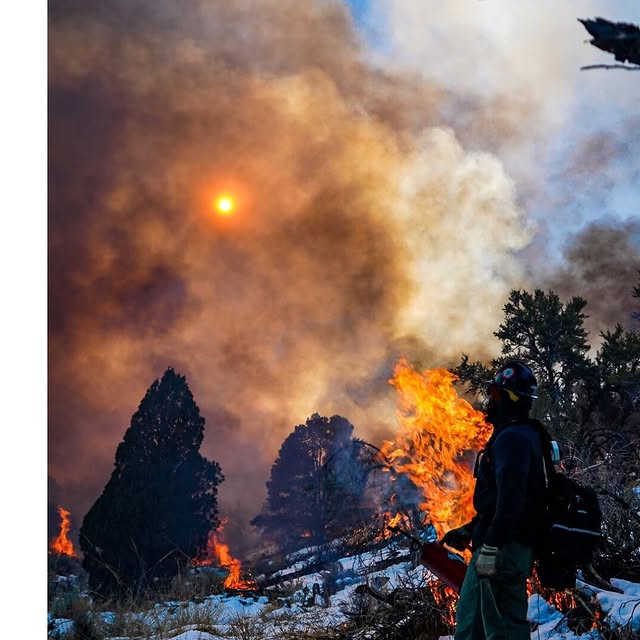
Drip drop 🔥 . . . #hazardousfuelsreduction #fuelsreduction #wildlandfirefighter #wildlandfirefighters #forestmanagement #prescribedfire #pileburning #controlledburn #goodfire #rxfire
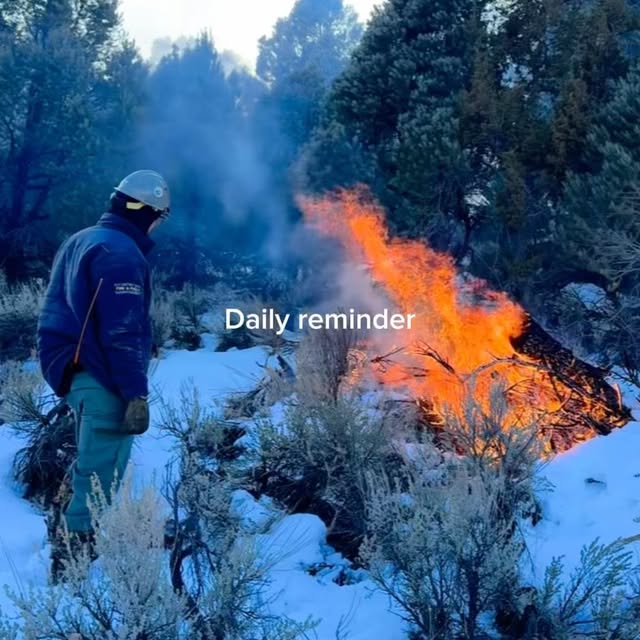
🔥 10 reasons why we use prescribed fire: 1. Prescribed fire (aka rxfire, prescribed burn, rxburn, controlled burn, good fire) can be used to manage certain species, fuel loading, and maintain vegetation community types. 2. Beneficial to many plant communities, especially ones that are fire adapted. 3. Can enhance the growth, reproduction, and vigor of certain species such as quaking aspen. In other regions, species like longleaf pine depend on fire. 4. Used as a secondary treatment to reduce biomass from hand thinning treatments. This allows movement for wildlife and leaves room for plants to grow. 5. Fire can be used to manage ‘departure’ or changes to ecological components such as: species composition, stand age, canopy closure, mosaic pattern, fuel composition, fire frequency, disturbances like insects & disease mortality, and die-off from drought. 6. Re-establishes plant diversity. We want biodiversity, not monocultures. 7. Vegetation treatments including prescribed fire is proactive management. Smoke is at much smaller scale compared to large-uncontrolled wildfires. 8. Removes overgrown vegetation and woody biomass to promote a mosaic of habitat types within ecosystems. 9. Using fire to fight fire. Reduces the likelihood of megafires that have catastrophic impacts to natural resources and communities. 10. Cleans up hazardous fuel loads surrounding older trees that have important ecological value. Fire is a great tool and has been used for centuries across different landscapes, starting with Indigenous peoples. Heavy fire suppression for 100+ years has altered many landscapes that would have been managed by natural fire and stewardship. We must be good stewards and owe it to nature to create the balance she needs. 🔥🌲🌳🌾🌸 . . . #hazardousfuelsreduction #conservation #nevadawildlife #fuelsreduction #forestry #wildlandfirefighters #forestmanagement #prescribedfire #controlledburn #goodfire
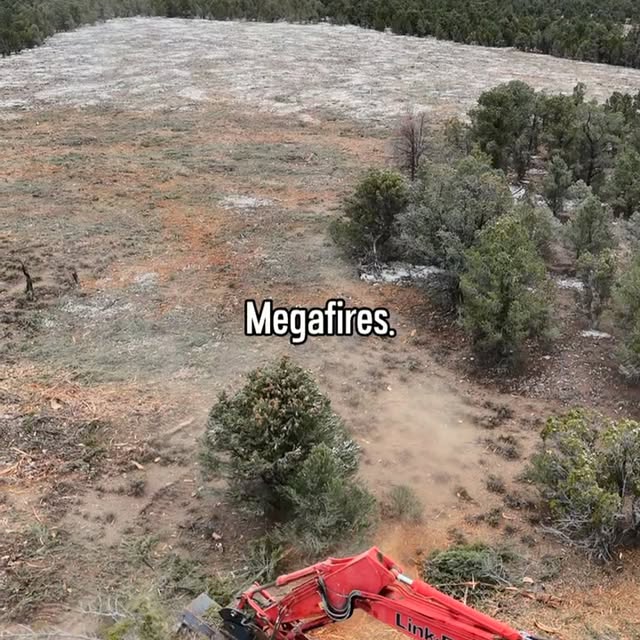
There are many factors at play. Do you think history has anything to do with the large wildfires today? 📚 For those not familiar with forest and fire history, you have some homework. Not all fire is bad. Fire is a natural occurrence and has shaped many landscapes for millennia. We now face modern problems such as excessive fuels and invasives that make ecosystems more fire prone. We have to use a combination of tools to reduce hazardous fuels and improve wildlife habitat. Do you live in a state with a high amount of destructive wildfires? What is the major cause of those wildfires? . . . #hazardousfuelsreduction #forestmanagement

That’s always a hard question for me to answer so here’s a little introduction and 11 facts about me: 1. I grew up in the saddle. 2. Moved to Nevada when I was a kid as my parents got back into cattle ranching. 3. Lived on remote ranches as in hours from the nearest grocery store, on generator power using an outhouse for a good part of my childhood. 4. Went to beauty school. 💇🏻♀️ 5. I’ve been working various jobs in conservation since 2009. 6. Competed in rodeo for most of my life but walked away in 2013. 7. Found my passion for wildlife and habitat work in 2018. I went back to college to earn my bachelor’s degree in Natural Resources. I have a degree in finance lol. 8. I like animals and plants more than people. 9. I’m an introvert. Most people talk too much. 10. When I’m not at work I’m usually in mountains @nevada_pines. 11. I’m a Korean adoptee 🇰🇷 and American AF. This country is not perfect but it has given me every opportunity to chase my dreams. 🇺🇸 Although I chose a much different path from how I was raised as a cowgirl, I am proud of what I come from. Growing up how I did and being that girl made me who I am today, so it’s important to share that part of my story. As for how I became a forester, it was seeing the results from habitat work. Seeing these vegetation treatments actually working on the landscape to benefit wildlife and improve habitat. I found a new passion in life and have never felt more drawn to something like this type of work. So I went back to school and the rest is history. So that’s me. Thank you to all who show your continued support and interest to learn more about what we do. My account is a little different from others as I show many faces on here. That’s because conservation work cannot be done by one person. It takes all of us, not just me. I’m here to help educate the public on what hazardous fuels reduction looks like in Eastern Nevada. Winter is coming but we’re just getting started! 🌲🔥

Soils: Part 2 Sagebrush Ecological Site There’s two additional sites that we covered but it will take a bit to edit those. Here’s part 2 from the first video. 🚜⛓️🚜 Chaining treatment from 2011. . . . #fuelsreduction #habitatimprovement #soils #soilscience #sagebrushsteppe #sagebrushbiome
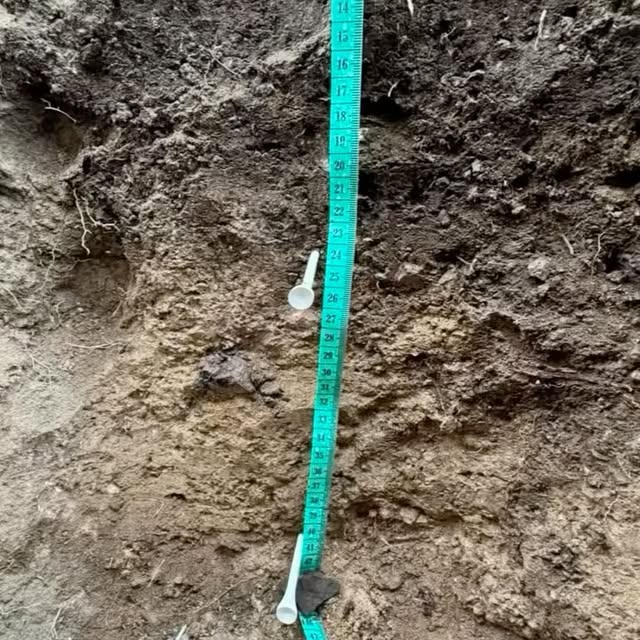
Soils: Part 1 Soil Profile One of the biggest accusations of these vegetation treatments is that we are destroying soils. So here’s a crash course on Nevada soils. This is most likely going to be a boring series to the people not interested in soil science but it is important to share. I did a lot of vegetation monitoring in the start of my career which included soils. I’ve dug hundreds of soil pits. While I have 15 years of field experience working in conservation, I am not a teacher. So I found someone who can better explain our soils better than I can. I had to trim this video down by several minutes because Matthew was getting really nerdy with it 😅🤓. Matthew did go into great detail about the horizons but most of IG will not understand what he talked about. So I cut it to the plain English parts. I will later share Matthew’s background but for now here’s the first video of ?? however many parts. Let’s start with soil horizons and soil profile. 🚜⛓️🚜 Chaining treatment from 2011. . . . #fuelsreduction #habitatimprovement #soils #soilscience #sagebrushsteppe #sagebrushbiome

🚁 10 reasons why we do aerial seeding treatments: 1. Seeding is used for a variety of projects for habitat improvement, landscape restoration, and Emergency Stabilization and Rehabilitation (ESR) plans 2. Seeding is used in conjunction with other treatment methods such as mastication and chaining 3. Used in ESR projects on burned or fire-scarred areas to help restore burned ecosystems 4. Used to ward off fire-prone invasive annuals like cheatgrass 5. Seed is applied in areas that do not have a sufficiently abundant or diverse mix of grasses, forb, or shrubs present prior to or post treatment and after wildfires 6. Successful seeding can significantly reduce the abundance of annual grasses following treatment 7. Seeding increases forage and cover a variety of wildlife species 8. Seeding is a beneficial treatment that helps to stabilize and protect soils, especially where sown on bare or exposed soil 9. Seeding and re-establishing deep rooted perennials helps to buffer against erosion 10. Seeding helps to restore watershed health and increases plant diversity 🌾 Seedings are designed specifically for each project. Mix depends on multiple factors including: * soil type * elevation * slope * annual precipitation * pre-existing vegetation * burn severity Cultivars are compared and seed rate is calculated given the site. Species are chosen that can successfully compete with invasive annuals and each project differs depending on specific site characteristics and seed availability. The application of seed is conducted with a helicopter using a large aerial broadcast seeder during the fall or early winter months, depending on snowfall. . . . #aerialseeding #habitatimprovement #fuelsreduction #aviation #helicopter #sagebrushconservation #restoration #grasslands #shrublands

Habitat 🌲🌾🦌 Modern forestry is not as scary as it looks. “Clearcutting” is a catch all for removal of trees over large areas but does not mean deforestation. There’s specific groups of people who view restoration or grassland and sagebrush conservation as destructive practice, and label any kind of tree removal as deforestation. Yes, it even happens here in arid desert ecosystems. Knowing the difference between restoration and deforestation is imperative. Is heavy equipment really as destructive as you think, or is it scary and intimidating because you saw it wiping out trees in a rainforest? I speak a lot to habitat improvement and conservation on my account, simply because that’s my personal ‘why’. It’s why I do this. I do this for wildlife and THEIR HOME. 🌲🌾🦌 It took me 13 years to become a forester. I even went back to school and earned a different degree. People told me for years I was dumb for wasting my time and to do something else. Ask yourself why would I go back to school if my intention was to purposely cause harm to Nature and kill trees for no reason? I could make double and triple the amount of money doing something else. Conservation is for people who believe in biodiversity. It’s passion. To leave the next generation with more than a black pit. It’s not a money grab like people think. Why would we intentionally want to destroy habitat? Are you comparing this to Amazon clearcuttiing? This is a mastication from November 2020. Four years post treatment. Four years ago almost to the day, I stood on the track of that excavator to get that 3rd shot (not recommend). This is not land use change or “making something new”. We restored this formerly treeless habitat to what it should be, while leaving a mosaic of trees for wildlife. Do you see how many trees are left? If anything, we need to be removing more trees. Look at what can grow when you just change the environment around it. 🌱 . . . #fuelsreduction #restoration #conservation #forestry #forestmanagement #habitatimprovement #mastication #excavator #caterpillar #mulchinghead #afe #discmulcher #machinehugger #heavyequipment #heavymachinery
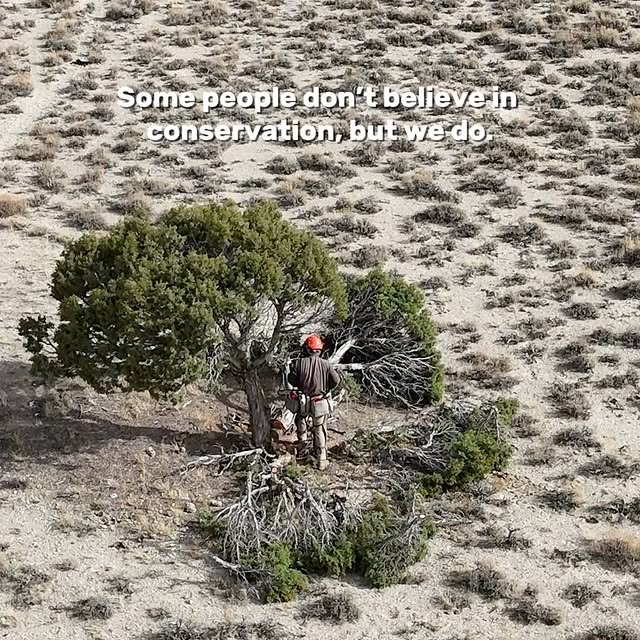
10 reasons why we do hand thinning treatments: 1. Directly benefits sagebrush conservation and used where tree expansion has occurred into treeless sagebrush communities 2. Desirable method for the selective removal of tree species with minimal impact to existing brush, grasses, and forbs 3. Used in areas where tree densities are low, or tree encroachment is thinner/low density 4. Used on steeper slopes 5. Promotes regeneration of native perennial plants 6. Improves habitat for sagebrush-obligate wildlife 7. Improves the health of woodland/forest sites by reducing competition and giving it better age class distribution 8. Useful when treating in mixed conifer, and will selectively thin stands to increase species diversity 9. Reduces hazardous fuels for large high severity wildfire 10. Provides immediate habitat improvement while keeping the existing sagebrush (sagebrush is extremely slow growing) Hand thinning treatments are conducted by manual methods (using chainsaws) to remove trees from previously treeless communities and when improving forest stand health. Tree biomass is: 1) Lopped and scattered across the landscape (left on-site to degrade naturally). These areas are available for personal and commercial fuelwood collection. Or 2) Burned at a later date, depending on the presence of invasive annual grasses As a reminder, these trees are not suitable for lumber. See my “Lumber? What do we do with the wood?” post. . . . #hazardousfuelsreduction #forestry #restoration #fuelsreduction #stihl #chainsaw #sawyer #savethesage #habitatimprovement #conservation #sagebrushsteppe #sagebrushconservation

✔️ sagebrush conservation ✔️ fuels reduction ✔️ habitat improvement ✔️ restoration ✔️ forest management . . . #fuelsreduction #forestry #habitatimprovement #savethesage #sagebrushsteppe #heavyequipment #johndeere #dozer #chaining #machinehugger
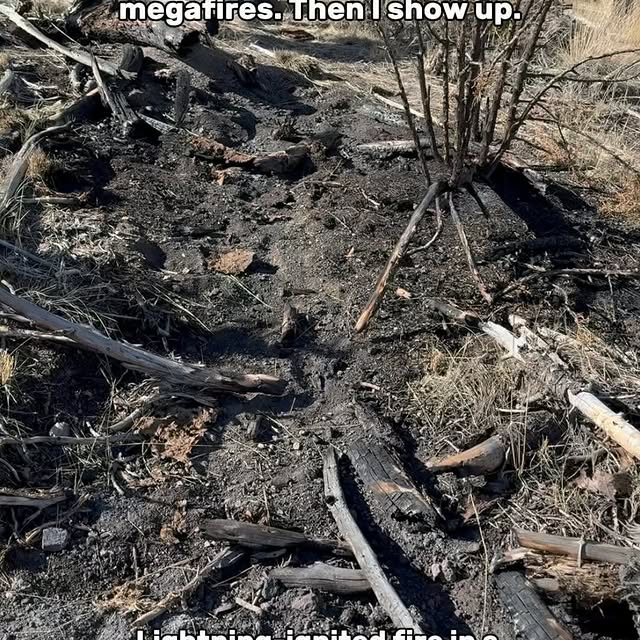
Fuels reduction treatments help slow the spread of large fires. They are not meant to stop, just slow the progression of large wildfire spread. I keep saying this, but diverse mix of fuels is important: 🌾 perennial grasses 🪻 forbs 🌿 shrubs Having a diverse mix of perennial fuels has reliable and durable effects on fire behavior (rate of spread, flame length, intensity) and the continuity of fuels. With trees invading into our treeless habitats, it changes fire behavior if a fire does occur. We want to reduce the possibility of crown fires in our sagebrush communities that we are trying to conserve. Fuels treatments help to lower the intensity and lessen the severity of fire. Vegetation treatments reduce or redistribute fuel to the ground level which decreases fire spread rate, intensity, and severity. *You can have too much surface fuel though, that’s why we remove the tree biomass for firewood, burn it, or grind it into mulch. I am not speaking for other states or other regions. I just share what we do specifically here in Eastern Nevada. Believe what you want, but if someone is feeding you “headlines” and telling you fuels reduction and forest management doesn’t work, I encourage you to learn more about it. . . . #hazardousfuelsreduction #fuelsreduction #forestmanagement

When tree expansion or infilling happens over the years, we lose critical habitat for wildlife. It also alters fire behavior and becomes more at risk for high severity 🔥🔥🔥 wildfires that spread quickly due to changes in fuel composition (shift from grass/shrub to woodland/forest). 🌾➡️🌲 We use a variety of tools, mechanical and prescribed fire to remove invading trees while leaving a mosaic for wildlife. Each site varies on the type of treatment method because we account for soil type, slope, elevation, precipitation zone, and existing vegetation. We design treatments to mimic natural fire patterns and make special consideration for wildlife. The habitat shown was managed for big game. Treatments are designed differently for Greater Sage-Grouse as it’s a ground-dwelling bird and I’ll share more about that in the spring. . . . #hazardousfuelsreduction #fuelsreduction #conservation #hunting #biggame #forestry #nevadawildlife #habitatimprovement
Similar Influencers

Nikole Goncalves | Healthy Food + Lifestyle

Armen Adamjan

MindsetHealer

Attic Fanatics

RSMS PEST CONTROL

Yahya Kaludi | Civil By Yahya Sir

Banwet Waterproofing Info

PRIME PHYSIQUE | HEALTH | BIOHACKING | GYM

Manorama Online

Shipshape

SATYA ELECTRICALS

PS Electronica (E+AutOff)

Fast Company

orunattapranthan | Malayali Tech Enthusiast

Subsidence Ltd

Aeroo Shield

SafeQ

Cairns Cleaning League

Brent Fletcher

dr cardio

Barbara O’Neill

Saintly Care

Justin Ford STR Safety Expert

SWELL Home Inspections

Royaltyautoservice

USDOT NHTSA

America Saves Money

Byron Lazine

Wealthfront
